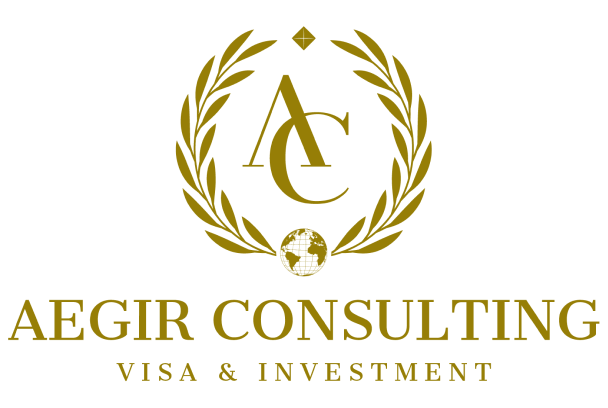Executive Summary
Alright, let’s talk about one of Hungary’s more underrated residency pathways, the Hungarian National Card, or Nemzeti Kártya. We’ve worked with dozens of applicants on this route, and it’s genuinely one of the smoothest options out there, if you’re from the right country.
As of July 2024, this card is available to citizens from eight specific countries that Hungary shares historical, cultural, and regional ties with. If you’re from Serbia, Ukraine, Belarus, Bosnia and Herzegovina, Moldova, Montenegro, North Macedonia, or Russia, you’re in luck. The National Card offers simplified residency procedures, the right to work, the ability to bring family over later on, and even a clear path toward permanent residency.
That said, there are nuances, and some of them can trip you up if you’re not paying attention. We’ve learned that the hard way, more than once.
Who Is Eligible for the Hungarian National Card?
So here’s the first major thing to get straight, eligibility is limited. Hungary didn’t make this an open-door policy for just anyone. You need to be a national of one of these eight countries:
- 🇷🇸 Serbia
- 🇺🇦 Ukraine
- 🇧🇾 Belarus
- 🇧🇦 Bosnia and Herzegovina
- 🇲🇩 Moldova
- 🇲🇪 Montenegro
- 🇲🇰 North Macedonia
- 🇷🇺 Russia
That’s it, no exceptions right now. We’ve had applicants from Georgia and Armenia ask if they’re included. Unfortunately, they’re not. Hungary hasn’t announced any expansion plans for the program either, so unless something changes, you’ll need a different residence track if you’re not on this list.
Work Rights Under the National Card
Yes, you can work, and this is where things get a little tricky. The National Card does authorize employment, but it’s not a blanket work permit.
You’ve got to stick to the job type you declared in your application. For instance, say you applied to work in IT, you can’t suddenly decide to open a bakery without updating your permit. That’s something we’ve had clients forget, and it led to compliance issues with the NDGAP (Hungary’s immigration authority).
Also, if you switch employers, or even roles within the same company, you need to notify the NDGAP. You don’t need a brand new permit, but the paperwork must match what you’re actually doing. Keep screenshots, contracts, emails. Don’t assume they’ll take your word for it.
We once had a client who went from logistics assistant to account manager without updating their file, and that triggered a re-evaluation of their whole permit status. Avoid that.

How Long is the Card Valid?
Here’s the simple breakdown:
- Initial period: 2 years
- Renewal: Up to 3 additional years
- Total maximum stay: 5 years
Just remember, renewal isn’t automatic. You need to file before your permit expires. If you miss the deadline, you risk losing your legal status entirely. Trust us, chasing last-minute documents while your card is expiring is a nightmare.
Start the renewal process at least 90 days in advance, especially if you’re traveling or changing addresses. We’ve seen processing times go from 2 weeks to 2 months depending on backlogs, so don’t play chicken with deadlines.
Can Family Members Join You?
Yes, they can, but don’t assume it’s a one-click process. Family reunification under this permit has its own rules.
Your spouse and minor children can apply, but only after you’ve established legal residence in Hungary. That means you’ve already got your National Card in hand.
Here’s what they’ll need to show:
- Proof of your legal residence
- Stable income (enough to support everyone)
- Suitable housing (and yes, they might check square footage)
- Legal relationship (marriage or birth certificates, translated and legalized)
We had a client who submitted an un-translated birth certificate from Moldova. It got rejected instantly. Pay for proper translation and legalization upfront, it’ll save you weeks.
Also, know that processing for family reunification is slow. It’s usually 60–90 days, sometimes longer. Factor that into your plans.
Path to Permanent Residency (and Citizenship)
This part’s exciting, and, if we’re honest, one of the biggest draws of the National Card.
After three years of continuous legal residence under the card, you can apply for the Hungarian National Permanent Residence Card.
Important clarification here, this is not citizenship. For Hungarian citizenship, the bar is higher. You’ll need:
- 8 years of legal residence
- A Hungarian language exam (not easy, we recommend prepping well in advance)
- Proof of integration, meaning you’ve lived, worked, or studied here in a meaningful way
That “good character” bit in the citizenship rules? It’s vague, but we’ve seen people denied for minor issues like unpaid taxes or a misdemeanor. Don’t ignore small legal stuff.
Application Process: What You’ll Need
You’ve got two ways to apply:
- Online via the EnterHungary portal
- In-person at an NDGAP regional office
We usually recommend doing the online route if you’re already abroad. The system can be glitchy, yes, but you avoid long waits and awkward office visits.
Here’s the core doc list:
- Valid passport
- Proof of accommodation (rental contract, deed, etc.)
- Proof of income (job offer, bank statements)
- Purpose of stay (employment, self-support, etc.)
- Health insurance
- Passport photos
- Clean criminal record (in some cases)
Some clients get caught out with expired documents, even a bank statement more than 30 days old can get flagged. Keep everything fresh and double-check dates.
There’s no guaranteed processing time, but we generally see decisions in 4–8 weeks. That said, delays happen, especially in the summer.
How Is This Different from Other Permits?
Let’s be honest, Hungary’s permit system is a maze. People mix these up all the time. Here’s a table we use to break it down for clients:
| Permit Type | Who It’s For | Initial Validity | Work Rights | Leads to PR |
| National Card | Citizens of 8 listed countries | 2 years | ✅ Yes (with reporting) | ✅ After 3 years |
| Hungarian Card | Highly skilled non-EEA professionals | Up to 3 years | ✅ Yes (with employer tie) | ✅ After 3 years |
| White Card | Digital nomads (non-EEA) | 1 year + renewal | ❌ No HU client work | ❌ |
| National Residence Card | Residents with 3+ years already in Hungary | 5 years | ✅ Yes | Already PR |
| Guest Investor | Foreign investors (€250K+) | 10 years | ✅ Yes | ✅ After 3 years |
Quick note, the White Card looks cool on paper, but the no-local-client clause really limits its usefulness. We usually steer remote workers from eligible countries toward the National Card instead.
Why Choose the National Card?
If you’re from one of the eight eligible countries, this permit’s a game-changer. Seriously. It’s one of the few residence routes in the EU with built-in work rights, family options, and a short timeline to permanent residency.
You get to:
- Live and work in Hungary, legally
- Access public services, education, healthcare, local registration
- Travel in the Schengen Zone for up to 90 days in any 180-day window
- Bring your family (if you’re ticking all the right boxes)
- Lock in a path to PR in just 3 years
It’s also cheaper and faster than some other EU national schemes. That’s part of why we recommend it to qualified clients over the more restrictive (and expensive) investor permits.
Need Help Applying? Aegir Consulting Can Guide You
We’ve helped dozens of applicants move through the National Card process, from pre-checks all the way to permanent residency. It’s not rocket science, but it is bureaucratic. Having someone who knows the pitfalls can save you serious stress.
At Aegir Consulting, we’ll help you:
- Confirm eligibility (some cases are borderline)
- Get your docs prepped, translated, and legalized
- Submit the full package, correctly, the first time
- Support family reunification applications
- Plan your next steps toward long-term residency or citizenship
Reach out today and tell us your story. We’ll walk you through the process like we’ve done for so many others, calmly, confidently, and with all the little tricks we’ve picked up over the years.





